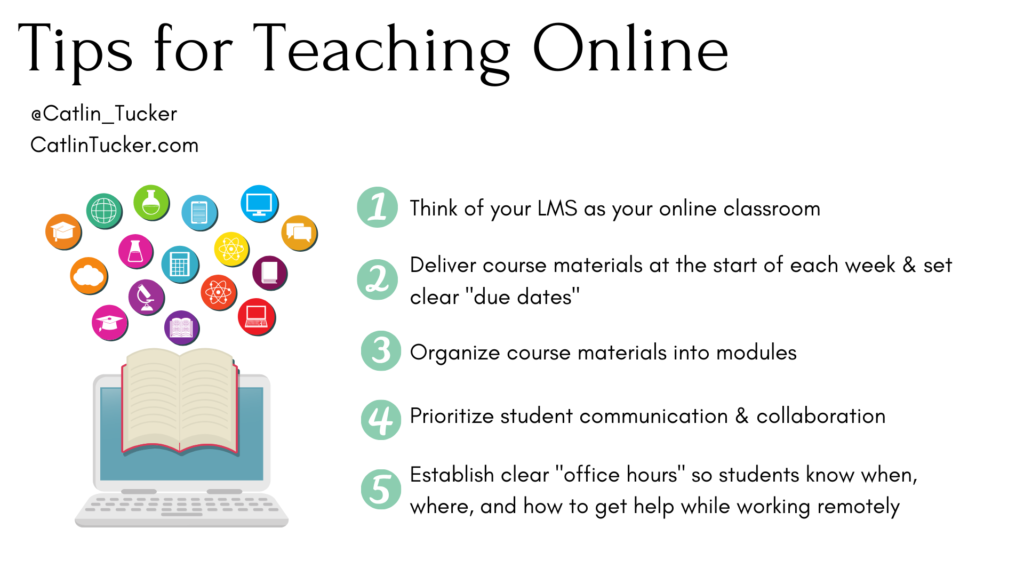Moving Coursework Online: Considerations And Strategies Explained
With technology playing an ever-increasing role in our daily lives, it comes as no surprise that many schools and parents are choosing to implement digital learning as part of a child's learning experience. Wayne Journell and David Schouweiler (2019) discuss how online instructors can create engaging and informative virtual courses. Many of the principles and ideas for K12 are suitable for online coursework.
One important aspect to remember is that children and adolescents learn differently than college students or adult learners, so simply trying to follow the same style of online learning will not lead to a successful path. Extra care must be taken to ensure the student receives a variety of learning experiences that will keep them engaged and interacting with the teacher and other students.
Why should you mix synchronous and asynchronous learning?
If you want to build a personal relationship with students; have the class completely synchronous, to provide a tremendously close feel to a classroom. This allows students to engage with each other and their instructor in real-time. However, there are some issues with this method, namely that it requires overly strong bandwidth (which can get pricey), as well as the fact that scheduling conflicts are extremely likely. Alternatively, an instructor may choose to have their online course completely asynchronous, allowing students (and the instructor!) to log in and participate at any time. As you may expect, this also has drawbacks such as “a lack of instant feedback, lack of personal interaction, no live collaboration, and real-time activities, can cause lack of motivation, [and] requires self-discipline” (Christopher Pappas, 2015). Most experts in the field suggest a mix of both synchronous and asynchronous learning. The best combination will be unique to each course and subject.
Is your online course hard to navigate?
Caitlin_Tucker: Tips for Teaching Online
Additionally, instructors must ensure that students can easily navigate the course. It is recommended that an instructor carefully research the various LMS modules that are available, and choose the one best suited for the course material but what we are finding out is many times instructors do not have a choice, apps used in the classroom are disjointed, and skills do not build for every grade level. Once an LMS is selected, the module must be strategically organized to provide students with a clean, easy-to-navigate space. A good approach is usually to organize the essentials in tabs, which then contain clearly labeled folders within. Journell and Schouweiler (2019), recommend you always include
● A place to find the instructor’s contact information (How can students connect with you)
● A place to find copies of the syllabus, course expectations, and procedures (Homework and student work examples)
● A place to find assignment descriptions, due dates, and the time it takes for each module (Rubrics, Small Chunks of Content)
● A place to access the course content in modules (Everything should be located in one space)
● A place for student collaboration on assignments (either synchronous or asynchronous-peer tutoring, or a wiki for students to collaborate)
Working to change things up is necessary for an online platform!
Rather than overwhelming students with loads of text to read and assignments to write, an instructor may want to consider mixing it up with other learning methods. Voice-over PowerPoint presentations are a great way to reduce reading times while providing a classroom feel to an assignment. Connection to the teacher is fostered when their presence is found in an online course, whether that is via a voiceover, a podcast, synchronized class meetings, one-on-one meetings with the students, or a step-by-step video of the instructor demonstrating a difficult concept. Also, it is important for students to feel connected to each other as well. Ways to accomplish this is to encourage discussion. This can occur during the synchronized class meeting, via threaded discussion boards, having students create a class wiki, or through group projects.
Finally, online learning comes with a whole slew of benefits and disadvantages, simply because it occurs online. While the Internet has many pitfalls such as threats to students’ privacy, and the always-annoying issue of incompatible files, it also offers teachers exciting new ways to introduce students to learning such as WebQuests, simple image and video creation, and anything else Web 2.0 can offer.
References:
Journell, W., & Schouweiler, D., (2019). Handbook of Research on Emerging Practices and Methods for K-12 Online and Blended Learning. [PDF]. IGI Global. URL: file:///C:/Users/Gideon/Downloads/HeafnerTinaLIGIGloba_2019_HandbookofResearchonEmergingPracticesand.pdf
Pappas, C. (2015). Asynchronous Learning Advantage and Disadvantage in Corporate Training. Elearning Industry. URL: https://elearningindustry.com/asynchronous-learning-advantages-and-disadvantages-in-corporate-training
Tucker, Catelyn:, K. H., says:, C. T., says:, N. O., says:, L. L.-V., says:, S. H., says:, K. L. H., says:, T. O. B., says:, W. W.-D., says:, B. P., & says:, S. H. (n.d.). 5 tips for teaching online. Dr Catlin Tucker. https://catlintucker.com/2020/04/5-tips-for-teaching-online/.

